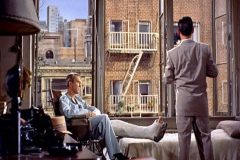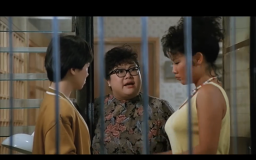This article identifies various features of the apartment plot as well as taking up numerous case studies through the panoptic spectrum of the apartment plot as a critical tool for analysis, evaluating the significance of the apartment plot associated with the different genres.
The writer believes that the apartment plot is not just merely a setting, instead, it configures the narrative in certain ways. It inspires me to have a contemplative thought in accordance with the role of the apartment plot. Not only can narrative be expressed via dialogue and verbal communication, but it also can utilize the apartment structure, ambiance, objects arrangement and actors’ behaviors. Take Rear Window (1954) as an example; it expresses a myriad of details by a voyeuristic angle, a single long shot, and more importantly, the apartment structure. The permeable transparency of each apartment in the film keeps shaping the atmosphere and manifesting the issues of the plot, mobilizing the idea of the domestic urbanism to the audience in the meanwhile.
Moreover, by comprehending ‘the meaning and value of porousness, privacy, simultaneity, and encounter shift in different contexts’, a thought emerges in my mind is that apartment plot also facilitates cultural exchange. An example can illustrate this point. Unlike the apartment structure in Rear Window (1954), It’s a Mad, Mad, Mad World (1987) which was filmed in Hong Kong public house estates indicates different cultural history and tradition which are influenced by the structure of the apartment building and the interior design. This film shows a higher privacy of the apartment yet the scenes of eavesdropping and the interaction of neighbors happen frequently. The connection between apartment plot and urban life in different countries is tightly interlaced.
–Yeung Po Ying, 3035923940
Note:
Wojcik, Pamela Robertson, In Urban Living and Global Screen Cultures: What Makes the Apartment Complex? (Durham: Duke University Press, 2018), 1-20



Great summary and reflection. I have enjoyed how you have applied concepts to understand a film in the Hong Kong context. The apartment plot is important to understand architecture as it has combined users’ experience with the built environment.